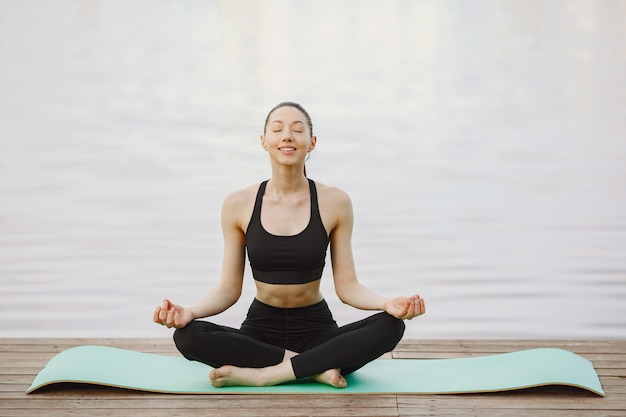
A yoga body isn’t just about flexibility; doing yoga can boost your memory and overall health. In the UK alone, people are spending around £790 million a year on yoga classes and accessories.
Yoga seems to be evolving in unique ways with different styles like rage yoga, naked yoga, and even doing poses on paddleboards or with dogs. Despite these trends, science backs up yoga’s real benefits. UCLA researchers found that a three-month yoga and meditation course was better than memory exercises for older adults. Another study showed it could improve sleep for breast cancer survivors.
When Lucy Edge, a former advertising executive, faced deep depression, she turned to yoga instead of medication. She traveled to India and although she didn’t achieve a “yoga goddess” body, she found happiness and contentment. Lucy has since written books about yoga and created a resource listing clinical trials showing yoga’s benefits for various health issues.
Yoga can be a good alternative to mental exercises when it comes to memory improvement. A UCLA study tested brain scans and memory for over-55 adults who did 12 weeks of memory exercises compared to those who took a yoga and meditation course. The yoga group showed better improvement in spatial and visual memory, reduced anxiety, and increased resilience to stress.
Gentle practices like Kundalini yoga, which involve breathing techniques, meditation, and mantras, were part of the study. Participants also practiced Kirtan Kriya meditation, which involves chanting and hand movements.
Yoga is not only good for your brain but also for your heart. A review published in the European Journal of Preventative Cardiology in 2014 found that yoga might reduce heart disease risk as much as brisk walking. Stress, a significant contributor to heart disease, can be managed through yoga by lowering blood pressure and heart rate.
Dr. Mike Knapton from the British Heart Foundation notes that yoga’s benefits for emotional health can also aid those who have experienced heart problems. Practicing yoga has shown improvements in blood pressure, cholesterol, and weight, all of which are risk factors for heart disease.
An easy way to start reducing stress is through Restorative yoga, as recommended by senior teacher Anna Ashby. This type involves supported postures that are held for several minutes to give the nervous system a break.
Musculoskeletal physiotherapist and yoga teacher Sarah Shone found that 87% of participants in her yoga classes, which were integrated into the Primary Care Trust’s rehabilitation program, reported less pain. Yoga is part of the National Institute of Clinical Excellence (NICE) guidelines for lower back pain and can also help with incontinence and bone health due to its weight-bearing nature.
If you’re new to yoga, a gentle style like Hatha or Iyengar might be best. These styles are less intense and more suitable for beginners. For those with specific conditions like back pain, consult your doctor about recommended yoga classes.
Investing in good yoga props can enhance your practice. When choosing a yoga mat, consider where you’ll use it, its portability, and your height. A thicker mat is better for protecting your joints. Healthista recommends the Elephant Cork Yoga mat from Valka Yoga, which is durable, eco-friendly, and has good grip, ideal for hot yoga.
Cork yoga blocks from Valka Yoga can also support your practice, especially in challenging poses. Though heavier than foam blocks, they offer better stability and grip.
Not very flexible? No problem. Styles like Yin or Restorative yoga can help, or you might enjoy the more dynamic Vinyasa Flow, Iyengar for precision, or Anusara for a fun, upbeat practice. For specific health concerns, consider Yoga Therapy, where trained teachers use yoga to aid recovery.
Lucy Edge’s book “Down Dog Billionaire” is available on Amazon.

